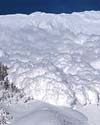| . |  |
. |
Miami (AFP) April 03, 2007 Forecasters warned Tuesday the Atlantic hurricane season would be a very active one, predicting 17 named storms would form of which nine could become hurricanes, highly likely to strike Caribbean and US coasts. "We have increased our forecast for the 2007 hurricane season, largely due to the rapid dissipation of El Nino conditions. We are now calling for a very active hurricane season. Landfall probabilities for the 2007 hurricane season are well above their long-period averages," said Colorado State University experts Philip Klotzbach and William Gray. "We have increased our forecast from our early December prediction due largely to the rapid dissipation of El Nino which has occurred over the past couple of months," they added. The forecasters said that they expect neutral or weak-to-moderate La Nina conditions during the upcoming hurricane season, and that "tropical and North Atlantic sea surface temperatures remain well above their long-period averages." "The probability of US major hurricane landfall is estimated to be about 140 percent of the long-period average. We expect Atlantic basin Net Tropical Cyclone (NTC) activity in 2007 to be about 185 percent of the long-term average," they added. Vice Admiral Conrad Lautenbacher, the NOAA administrator, noted that while "other scientific factors affect the frequency of hurricanes, there tends to be a greater-than-normal number of Atlantic hurricanes and fewer-than-normal number of eastern Pacific hurricanes during La Nina events." Of the nine hurricanes that they expect will form, five could be intense Category Three or more systems, Klotzback and Gray said. The likelihood of a hurricane hitting the US eastern coast is 74 percent, they said, while in the Caribbean the likelihood was greater than average. The hurricane season stretches from June 1 to November 30. Last year saw nine storms form five of them hurricanes which did relatively litle damage after a disastrous 2005 season. It was a record-breaking season with 28 storms forming, 15 of them hurricanes, including Stan which killed some 2,000 people in Guatemala and Katrina which hit the US Gulf coast flooding most of New Orleans and killing about 1,500 people.
Source: Agence France-Presse Email This Article
Related Links  Kabul (AFP) April 03, 2007
Kabul (AFP) April 03, 2007A powerful earthquake hit Afghanistan Tuesday, also jolting Pakistan and India, as the government announced more than 110 people were killed in four days of flooding and avalanches. There were no reports of casualties in the 6.2-magnitude quake, which hit near the Afghan town of Faizabad near the towering Hindu Kush mountain range after 8:00 am (0300 GMT). |
|
| The content herein, unless otherwise known to be public domain, are Copyright 1995-2006 - SpaceDaily.AFP and UPI Wire Stories are copyright Agence France-Presse and United Press International. ESA PortalReports are copyright European Space Agency. All NASA sourced material is public domain. Additionalcopyrights may apply in whole or part to other bona fide parties. Advertising does not imply endorsement,agreement or approval of any opinions, statements or information provided by SpaceDaily on any Web page published or hosted by SpaceDaily. Privacy Statement |